On a trip to any country in South East Asia, it is a rarity to not come across a Hindu Temple – Singapore, Malaysia, Indonesia, Burma, Vietnam and Cambodia, all of them have benefited from contacts which they have had with India over the centuries.
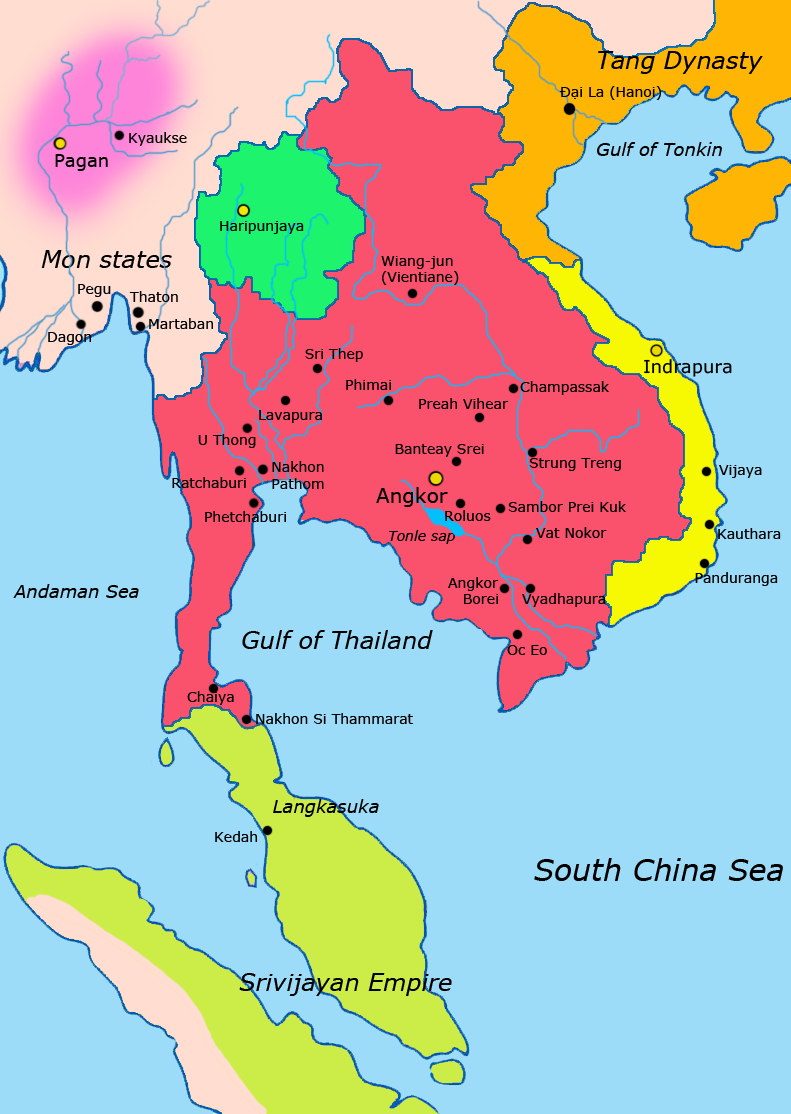
Historian RC Majumdar writes in his lecture series, Ancient Indian Colonization in South-east Asia, “The term Hindu is used here in a very broad sense. As is well-known, the word Hindu is derived from Sindhu, the name of the mighty river on the western border of India. The parsis used this name to denote also the territory lying on the bank of the river, that is to say that part of our country which was known to them. Gradually the name Sindhu in its phonetically changed form Hindu came to denote the whole of this country. Advent of the Muslims necessitated the use of two different terms to denote the two distinct classes of people. Henceforth the term Hindu came to denote the people of India other than the Muslims.”
This Diwali vacation, i had the opportunity to visit Cambodia, a vibrant tourist hotspot famed for the UNESCO world heritage Angkor Wat temples, beach city of Sihanoukville, historic capital city of Pnohm Penh and of course the mighty Mekong river which emerges from Tibet and nourishes countries on its way before emptying in to the South China Sea.
With Siem Reap being the only stop in #Cambodia, my effort was to go beyond Angkor Wat and explore the visible remnants of the region and how Indian culture had an influence. One such place of Interest is Kbal Spean, an Angkor era archeological site which is also called as the Valley of 1000 lingas.
Before embarking on a trip to Kbal Spean, one has to purchase the Angkor Pass – One day for USD 37, Three day for USD 62 and Seven day for USD 72. These are available at the complex on the main road to Angkor Wat. Kbal Spean is an hour’s ride from Siem Reap and the access begins at the Kulein mountains. Enroute is another major temple complex of Banteay Srei with Banteay Samre being a detour. The three put together form a day excursion. It is important to note the timings in order to avoid disappointment.
The walk to the valley of the 1000 lingas begins at a checkpoint. It is 1.5 kms but takes a good 40 minutes as one navigates slippery rocks and rough terrain. Stairs are available at steep climbing points but one definitely needs to watch their step at every point to avoid a fall. Pause and take a look at breathtaking views of the forests below, the rainforest canopy, natural rocky outcrops, tough creepers and climbers and of course a few reptiles. There are countdown boards egging you on during the short but tricky trek.
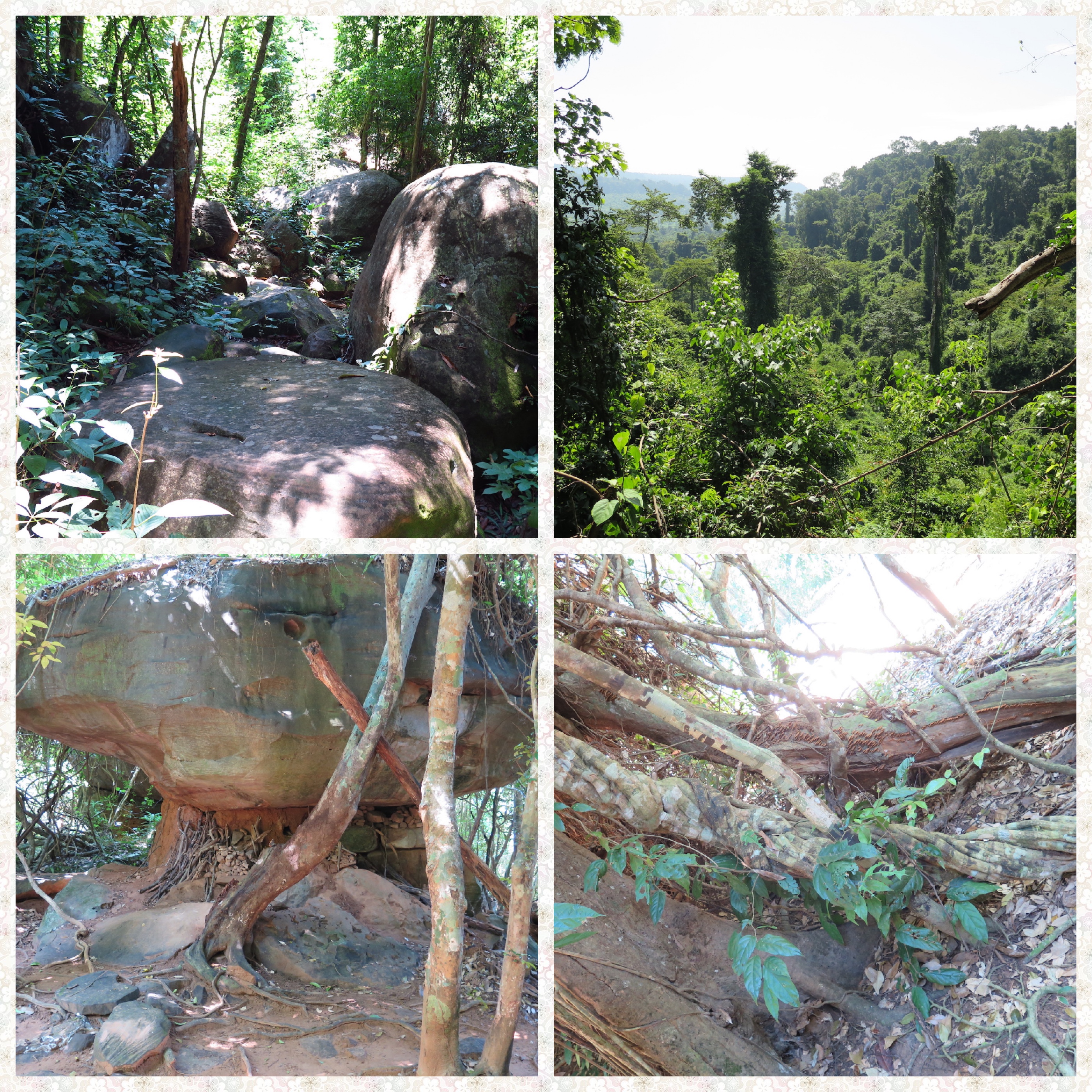
For the majority of visitors Kbal Spean is a picnic spot with a waterfall to cool off; The first sight of the lingas carved in to the river bed just made me bring my palms in union. It was not just about the reliefs of Siva, Vishnu, Brahma, Lakshmi that were carved in to the river bed but how the thoroughness with which Indian culture and civilization , in all its aspects would have been imbibed in Kambuja (ancient name of the great kingdom of present day Cambodia)
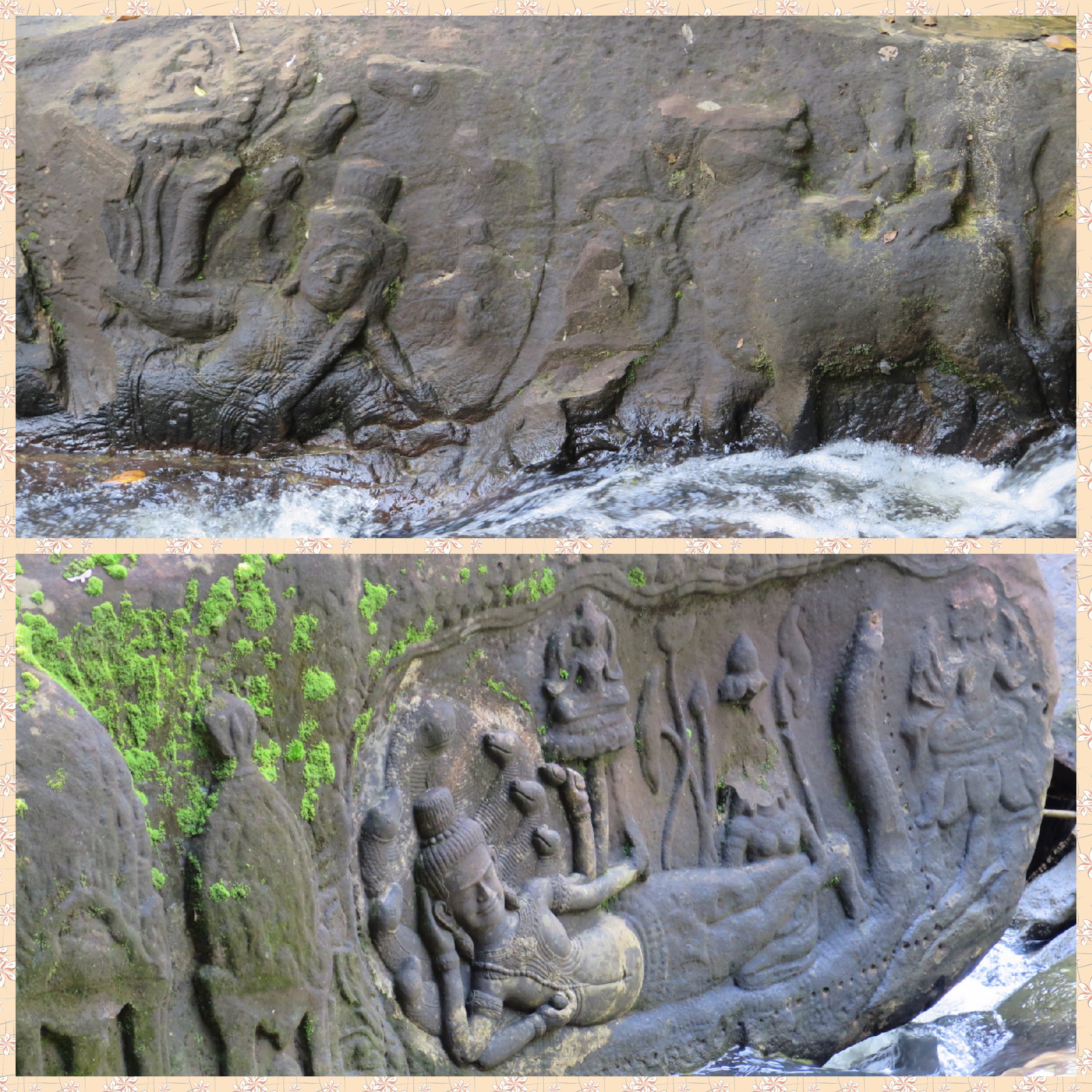
Scholars, priests, merchants and persons of various hues who travelled from India to Kambuja desa left a distinct imprint whether it was about a religious, ethical & spiritual life, spirit of piety & renunciation and most importantly the concept of emancipation from birth & deaths. A peek in to texts of scholars, archeologists and historians who have taken immense pains to read through inscriptions (In sanskrit and Khmer) will tell us that all the cultural maturity was achieved between the 6th century and 12th century. The indian influence was without any force or economic colonization. The 700 golden years of Kambuja desa ended as India was trampled upon by the Mughal empire and Cambodia remained a French protectorate till atleast the 19th century.
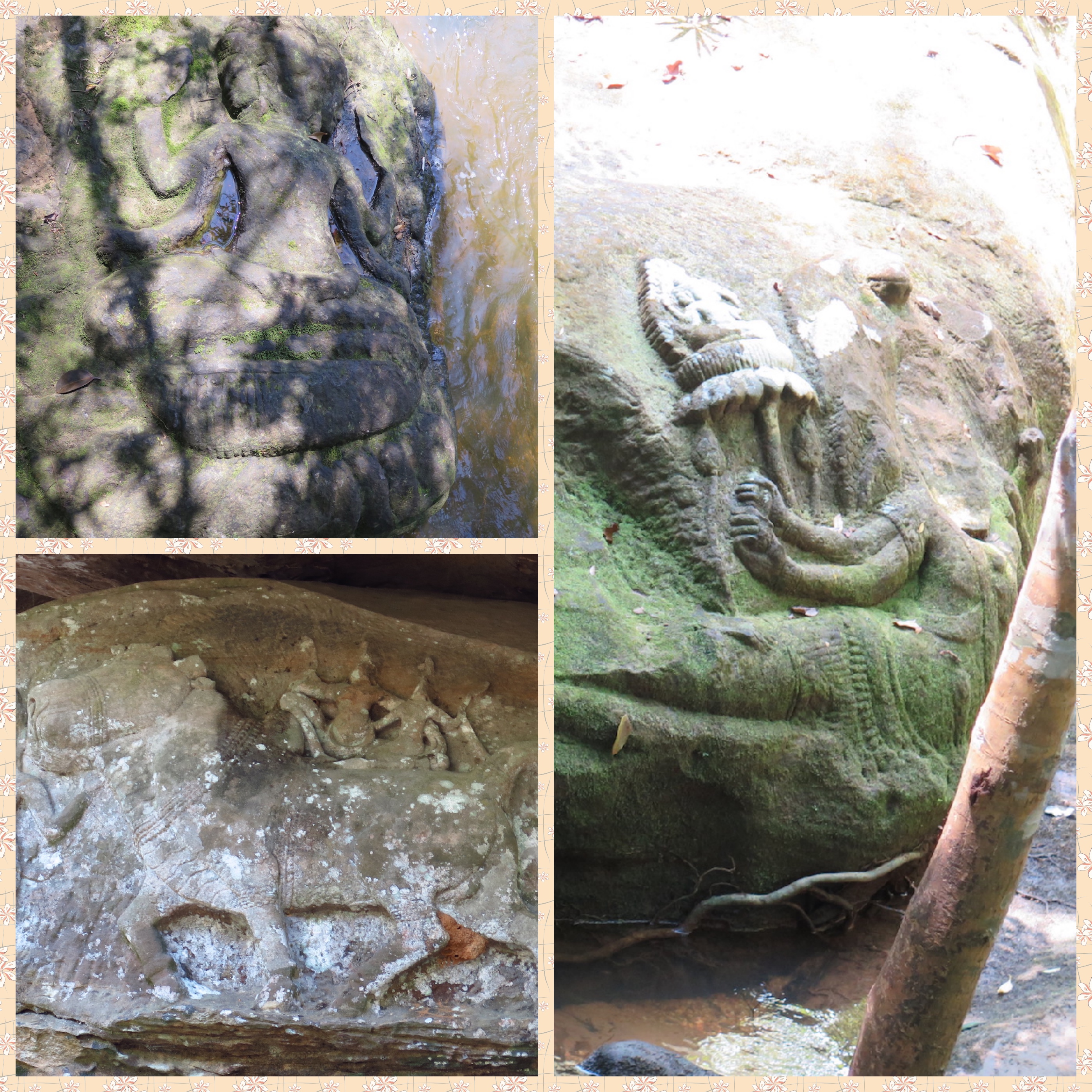
The site at Kbal Spean was discovered by Jean Boulbet, french ethnologist in the year 1969. Cut off during the Cambodian civil war, it was not until 1989 that the site was thrown open for visitors.
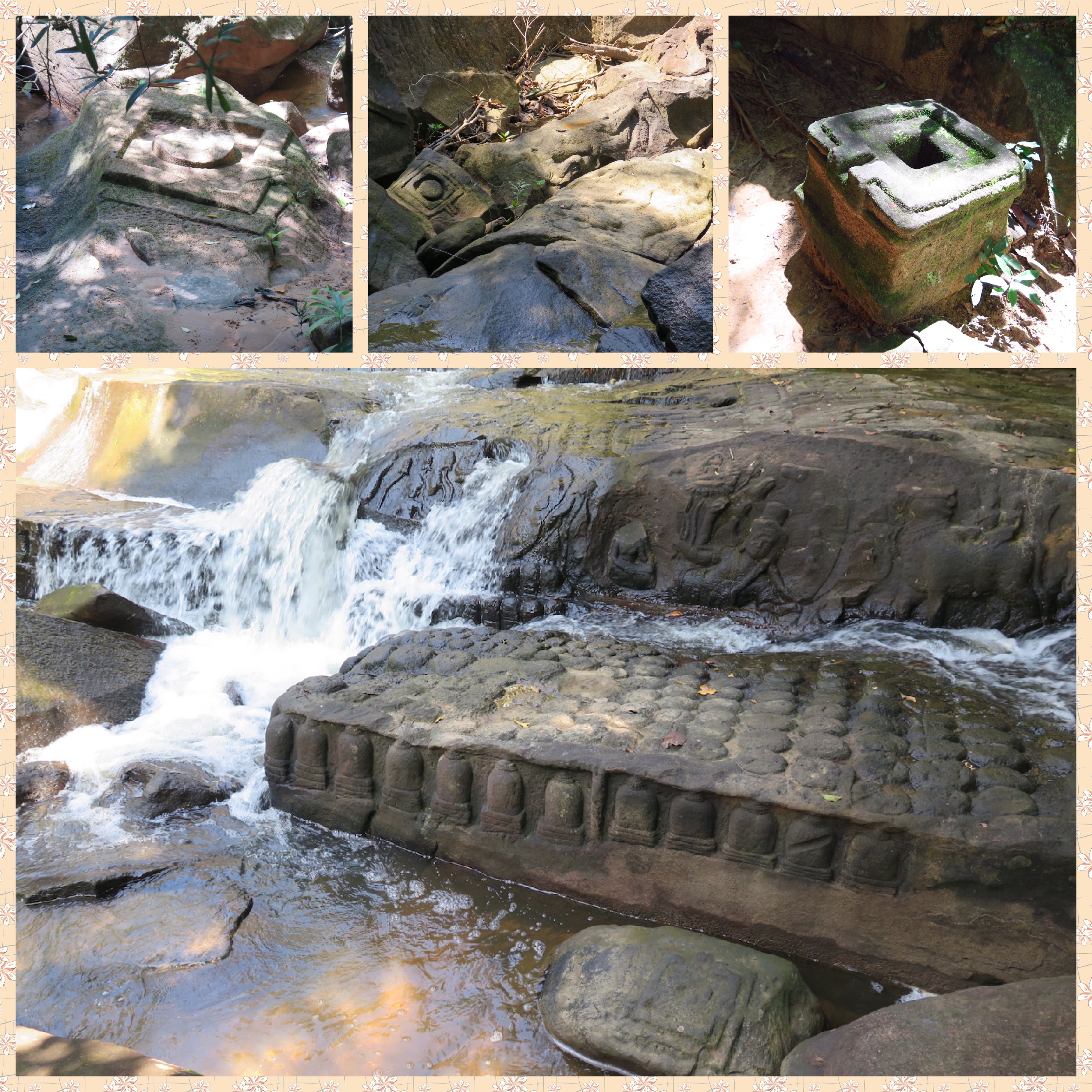
During the period from 6th and 12th century, Kambuja Desa began as a Saivite (rever Shiva as the supreme being) kingdom. The Angkor Wat temple was dedicated to Vishnu (Vaishnavite – Vishnu as the supreme being) around mid 12th century before Kambuja desa embraced Theravada buddhism as its main religion. The Kbal Spean site is said to have been carved during the 11th and 12th century which saw the reigns of some of the greatest kings of Kambuja – Suryavarman I and his successor UdayadityaVarman II. The kings had laid out very clear rules in society – conduct of oneself, treatment of seers & the learned and priests & physicians being held in high esteem.
Lord Siva is venerated across many temples in the world. THe most commonly worshipped form is the linga and the linga is kept cool with a continuous dripping of water at its head. The Kbal spean site with its “SahasraLingas” (1000 lingas in Sanskrit) has a continuous stream of water flowing on top of it. The water having flown over the sacred lingas enters the city of Angkor thereby said to be blessing the city.
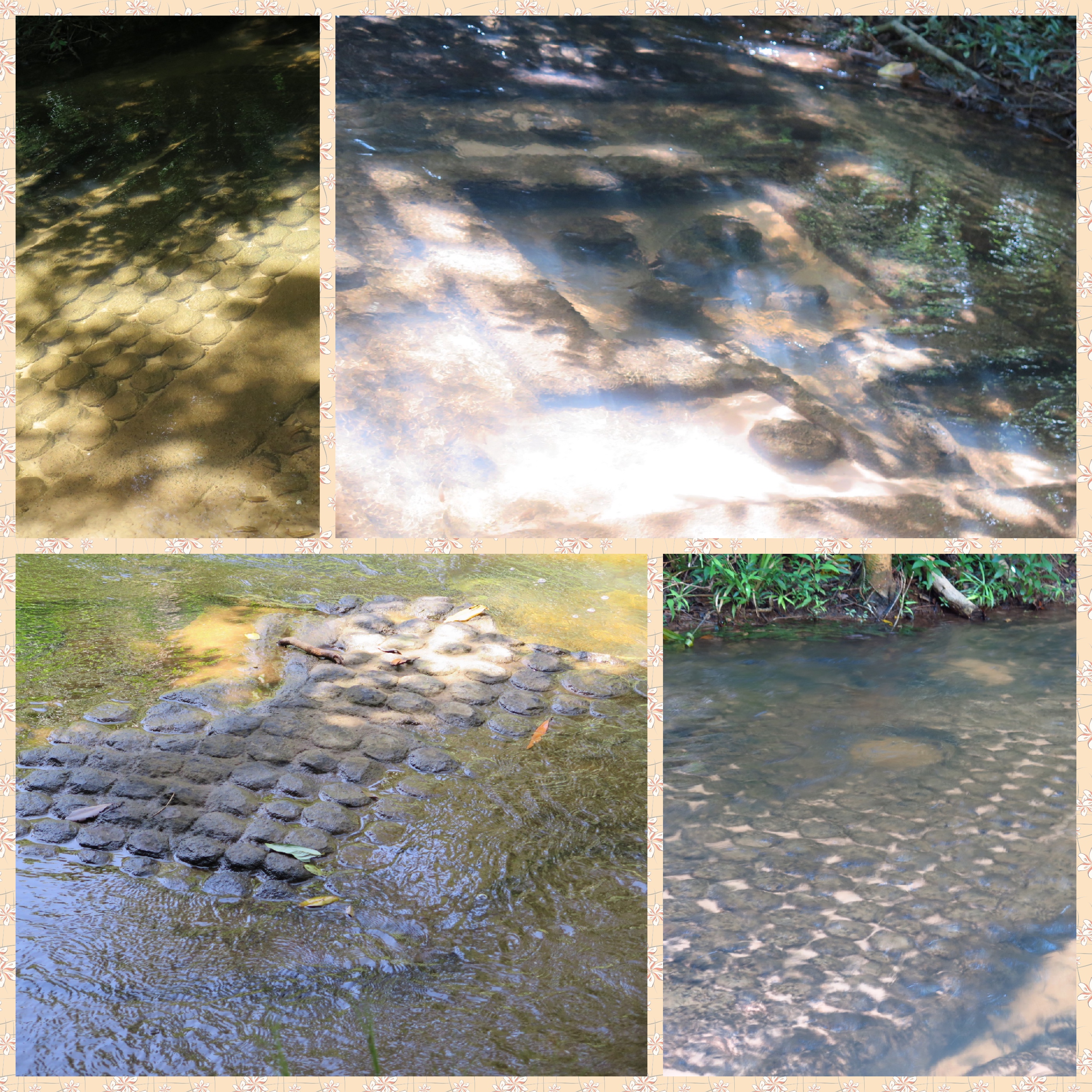
The carving sites have been fenced off to ensure that visitors dont desecrate the holy site. Still, one can reach out and grab a hanful of the cool water that has flown over the lingas and drink up without fear of any contamination. On a hot afternoon it is an absolute delight.
Walking downstream one can watch revellers below a cataract which further flows over many more lingas before meandering its way through the forests and entering the city of Angkor.

Having visited Kailash Mansarovar in the year 2015, the import of the visit to Kbal Spean and the opportunity to be in his presence was not lost on me. The place is pure energy and brought out a determination in my wife who despite a tricky trek was able to make it and savor the moment.
After this visit, i came back and immersed myself in two books by a highly respected historian of India – Shri R.C Majumder. Kambuja Desa – An Ancient Hindu Colony in Cambodia (Sir William Meyer Lectures 1942 – 43) and Ancient Indian Colonization in South East Asia (The Maharaja Sayajirao Gaekwad Honorarium Lecture, 1953-54). These opened the door to understand the extent of influence of India in the region. Needless to say, i am restless to go back to Cambodia and explore other wonderful places of the Kambuja Empire.
Getting to Siem Reap – Siem Reap is served by major Flag Carriers who also service india. Regular services from major Indian cities to #Bangkok (Thai Airways, Bangkok Airways), #Kualalumpur (Malaysian) and #Singapore (Singapore/SilkAir) will get you to Siem Reap with just one halt. The Visa facility too has been eased with the introduction of e-visas. Hotels are in plenty and one can find hotels to suit one’s budget with the assistance of an excellent ground travel agent. Travel agents offer excellent service right from suggestions on hotels to suit budgets, tying up with a registered guide, park tickets based on the interests and other add ons like a visit to the magnificient Tonle Sap lake.
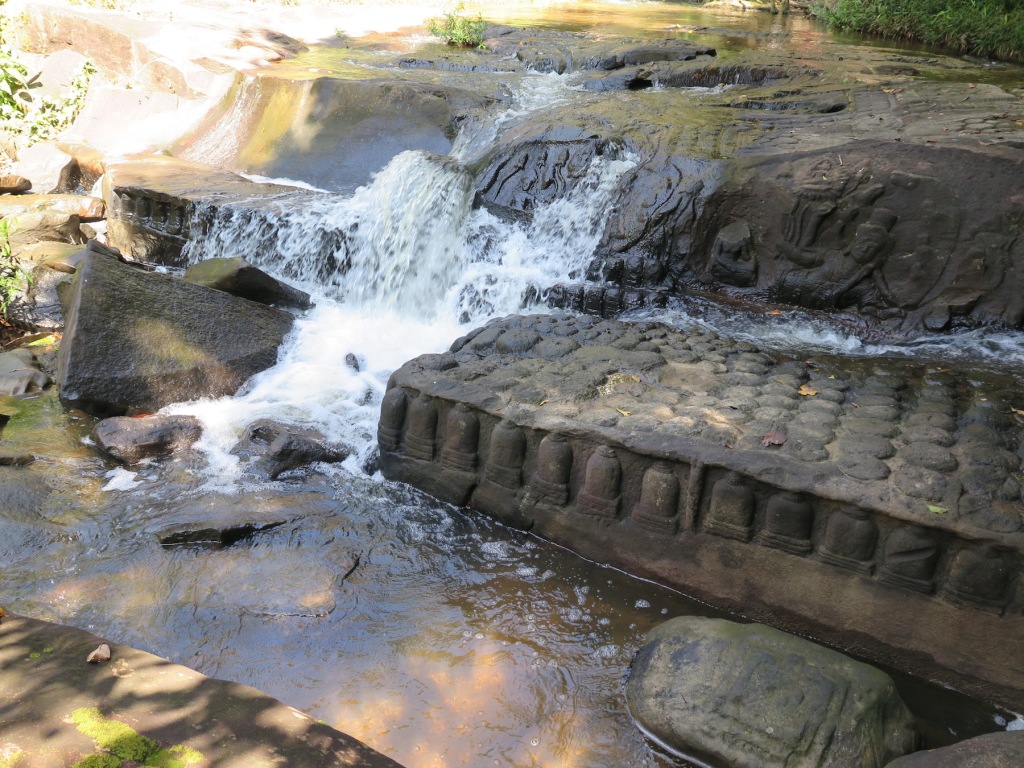
Leave a comment